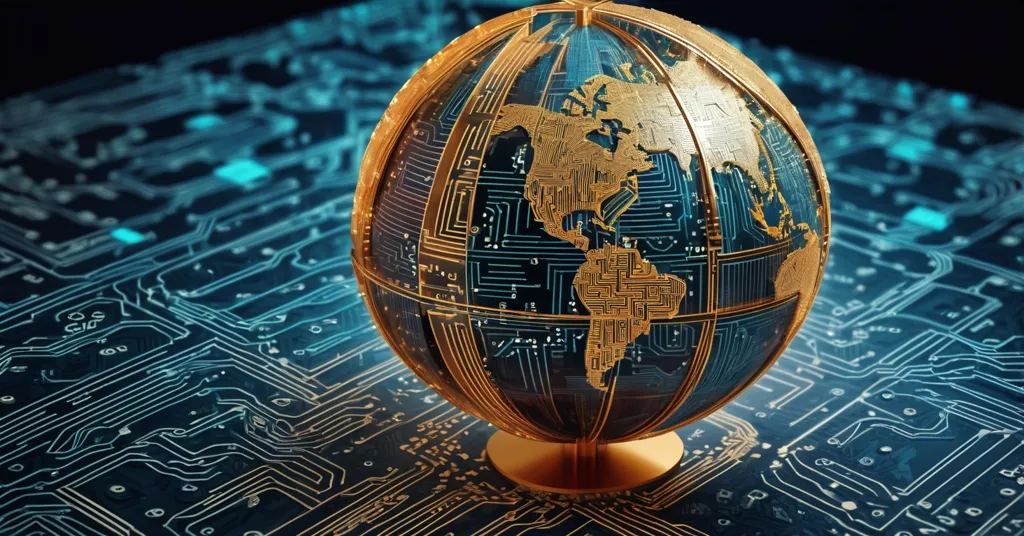IMF’s BPM7 Integrates Bitcoin into Global Finance, Signals Crypto’s Rise

IMF’s New Standards Signal Bitcoin’s Growing Role in Global Finance
- IMF releases new standards for monitoring crypto transactions.
- Bitcoin classified as a non-financial asset, stablecoins as financial instruments.
- U.S. and El Salvador make notable moves in crypto governance.
The International Monetary Fund (IMF) has taken a bold leap into the digital age with the release of its seventh Balance of Payments Manual (BPM7). This isn’t just another bureaucratic update; it’s a landmark move that propels cryptocurrencies like Bitcoin and stablecoins into the heart of global finance. Collaborated on by over 160 countries, this effort underscores the growing recognition of digital assets in the world economy.
Previously, cryptocurrency transactions, estimated to be in the trillions of dollars annually, were often unreported or inconsistently recorded. The new manual changes this dynamic by providing a framework to track these flows with greater accuracy. Bitcoin, the trailblazer of cryptocurrencies, is now classified as a non-produced, non-financial asset, akin to land or natural resource rights. This might sound dull, but it’s a significant nod to Bitcoin’s unique role in the financial world. Stablecoins, like Tether, are categorized as financial instruments, reflecting their closer alignment with traditional finance.
The manual also sheds light on crypto services such as mining and staking, classifying them under computer services exports. This move not only legitimizes these activities but also weaves them into the broader economic narrative. For those unfamiliar, mining is the process of verifying transactions and adding them to the blockchain, while staking involves holding funds to support the network’s operations.
In the United States, the government has established a strategic Bitcoin reserve, holding about 200,000 BTC, obtained through lawful seizures. President Donald Trump has signed an executive order blocking future sales of these assets, signaling a long-term commitment to holding Bitcoin. Meanwhile, El Salvador continues its bold experiment with Bitcoin, accumulating 6,125 BTC, valued at approximately $538 million, despite facing restrictions from a $1.4 billion IMF deal. These actions highlight the diverse approaches nations are taking towards integrating cryptocurrencies into their financial systems.
The crypto community’s response to the IMF’s manual has been mixed. Some see it as a validation of Bitcoin’s importance, with Max Keiser, Bitcoin adviser to El Salvador’s president, claiming the IMF recognized Bitcoin as “digital gold.” However, the IMF has not officially endorsed this status, and others caution against over-interpretation of the manual’s implications. While the new standards do not confer legal status to cryptocurrencies, they undoubtedly enhance their international economic significance.
“Bitcoin is now classified as a non-produced nonfinancial asset, while stablecoins and tokens…” – Cryptic (@Cryptic_Web3) on Twitter
“BREAKING: The IMF has just recognized Bitcoin as defacto digital Gold.” – Max Keiser (@maxkeiser) on Twitter
In countries like Nigeria, where over 35% of adults use or possess cryptocurrencies according to a 2023 KuCoin report, these new standards could have a profound impact. They provide a clearer framework for tracking and reporting digital asset flows, which is crucial for nations with high crypto adoption rates.
As Bitcoin continues to trade at $87,183, the IMF’s move underscores the growing recognition of cryptocurrencies’ role in global finance. While some might dismiss this as just another bureaucratic step, it’s clear that the world is slowly but surely embracing the digital revolution in money and finance. But let’s not get too carried away. The IMF’s manual is a step forward, but it’s not the endgame. Cryptocurrencies still face regulatory hurdles, and the path to full integration into the global financial system is fraught with challenges. Yet, for those of us who believe in the power of decentralization and the potential of blockchain technology, this is a moment to celebrate and continue pushing for a more open and inclusive financial future.
Some critics argue that the IMF’s manual might lead to increased government control over cryptocurrencies, potentially threatening the privacy and autonomy that many in the crypto community value. Additionally, the classification of Bitcoin as a non-financial asset might complicate taxation and accounting practices, creating new challenges for investors and businesses.
The IMF’s manual can be seen as a catalyst for effective accelerationism, pushing forward the adoption of cryptocurrencies and decentralized technologies. By acknowledging the role of digital assets in the global economy, the IMF is contributing to the broader movement towards financial freedom and disruption of the status quo. While Bitcoin is at the forefront of the IMF’s manual, other cryptocurrencies and blockchains also play crucial roles in the financial revolution. The manual’s impact extends beyond Bitcoin, potentially affecting the regulatory treatment of altcoins and innovative protocols that serve unique niches in the market.
Key Takeaways and Questions
- What is the significance of the IMF’s new Balance of Payments Manual?
The manual introduces global standards for monitoring cryptocurrency transactions, marking a significant step towards integrating digital assets into the global financial system. It provides a framework for over 160 countries to track and report these transactions consistently.
- How does the IMF classify Bitcoin and stablecoins?
The IMF classifies Bitcoin as a non-produced, non-financial asset, similar to land or natural resource rights. Stablecoins, such as Tether, are categorized as financial instruments.
- What actions have the United States and El Salvador taken regarding Bitcoin?
The United States has established a strategic Bitcoin reserve of about 200,000 BTC, obtained through lawful seizures, with President Donald Trump signing an executive order blocking future sales. El Salvador continues to accumulate Bitcoin, holding 6,125 BTC despite IMF restrictions.
- How has the crypto community reacted to the IMF’s manual?
The crypto community’s response is mixed. Some view it as a validation of Bitcoin’s importance, while others caution against over-interpretation. Max Keiser claimed the IMF recognized Bitcoin as “digital gold,” though this was not officially endorsed by the IMF.
- What is the current trading price of Bitcoin?
Bitcoin is currently trading at $87,183.
- What is the significance of the new standards for countries like Nigeria?
Countries with high cryptocurrency usage, like Nigeria, where over 35% of adults use or possess cryptocurrencies, will benefit from these new reporting formats. The standards enhance the international economic significance of digital assets and provide clearer tracking and reporting methods.
- What are the potential challenges posed by the IMF’s manual?
The manual might lead to increased government control over cryptocurrencies, potentially threatening privacy and autonomy. It could also complicate taxation and accounting practices for Bitcoin and other digital assets.
- How does the IMF’s manual relate to effective accelerationism and decentralization?
The manual acts as a catalyst for effective accelerationism by pushing forward the adoption of cryptocurrencies and decentralized technologies. It contributes to the broader movement towards financial freedom and disruption of the status quo.
- What is the impact of the manual on altcoins and other blockchains?
While focused on Bitcoin, the manual’s impact extends to altcoins and other blockchains, potentially affecting their regulatory treatment and enhancing their role in the financial revolution.



